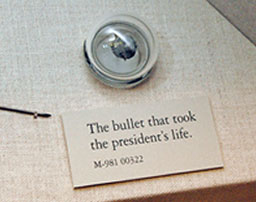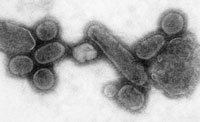|
THE ARMED FORCES INSTITUTE OF PATHOLOGY
The Armed Forces Institute of Pathology (AFIP), where Lori Andrews' series is set, is a real institution. Daily, its staff deals with projects that involve national security, forensics, historical analyses, infectious disease investigations, ballistics, and the training of law enforcement personnel. Hospitals around the country send patients' pathology samples there for a second opinion. The AFIP oversees forensic investigations and runs the National Museum of Health and Medicine, whose fascinating exhibits include the amputated leg from Civil War hero Daniel Sickles and a stomach-shaped hair ball from a teen who chewed her curls. It's on the grounds of the Walter Reed Hospital, where politicians and soldiers returning from battle get their health care.
The AFIP uses cutting edge technologies to address matters of national and international importance. Yet it is virtually unknown to the general public.
The AFIP, originally called the Army Medical Museum, was founded by President Abraham Lincoln on May 12, 1862. Its original mission was to collect pathological specimensand case histories of Civil War soldiers to facilitate research to improve wartime medicine. In that war, 200,000 soldiers died of their wounds, while another 400,000 died of disease.
| |

The bullet that killed President Lincoln on April 15, 1865 was removed at autopsy in the White House by Army Medical Museum surgeons Lt. Col. Joseph Woodward and Major Edward Curtis and is still on display at the National Museum of Health and Medicine, Armed Forces Institute of Pathology, Washington, D.C. |
| |
|
The expertise of its pathologists soon led to research with wider applications. In 1900, museum curator and U.S. Surgeon General Dr. Walter Reed proved that the mosquito carried Yellow Fever. A subsequent museum curator, Dr. Frederick Russell, perfected the typhoid vaccine, allowing U.S. soldiers to become the first in the world vaccinated against typhoid.
The Army Medical Museum relocated repeatedly in its first century. After President Lincoln's assassination, it moved to Ford's Theater. Then, museum curator U.S. Surgeon General Joseph Barnes was at Lincoln's autopsy, bringing back artifacts which are still on display—part of the President's skull, the bullet removed from Lincoln, and the bloody cuffs of the surgeon who removed it. For a long period, 1887 to 1969, the institution was located on the Mall in Washington, D.C. In 1949, it was re-named the Armed Forces Institute of Pathology (with the National Museum of Health and Medicine as a subdivision), and in 1969, it moved to its current location on the grounds of the Walter Reed Medical Center on the outskirts of D.C. near the Maryland border. The AFIP and Walter Reed cover 113 acres—four acres larger than the Vatican. They function like a small city, with their own fire department, police station, and other facilities, with ultimate oversight by the U. S. Department of Defense.
For more information about the AFIP, go to www.afip.org
The AFIP and Disease Research
| |

Negative stained transmission electron micrograph (TEM) of recreated 1918 influenza virus. |
| |
|
The 33 departments in the AFIP pathology division are advancing the boundariesof medicine. More than 40 new tests for diseases are developed there each year. Its genetic research is renowned, including the recent discovery of the sequence of the genome of the 1918 Spanish flu.
Each year, the AFIP receives over 100,000 pathology samples for analysis for second opinions. Some are from the military, but many are from civilian doctors and hospitals. In over 71% of its cases, the AFIP pathologists initiate or modify the diagnosis, leading to direct changes in the treatment of the patients.
The AFIP and Forensics
The AFIP performs high level forensic investigations. AFIP forensic experts collect evidence in the United States and abroad and process it in their labs in D.C. and Maryland. They often put their skills to work on other inquiries as well. After the September 11th terrorist attacks, AFIP scientists worked the site of the World Trade Center, helping to identify the remains. They have also helped solve historic mysteries, such as whether a group of corpses found in Russia were the Romanovs. And when Secretary of Commerce Ron Brown's plane went down near Croatia, AFIP investigators analyzed his body and the scene to determine if his head wound was from a gunshot or the crash.
The Office of the Medical Examiner at AFIP uses forensic technologies to identify soldiers who were killed in war. Their unit patch shows a poker hand, Aces over Eights, known as the dead man's hand, which was what Wild Bill Hickock was holding when he was shot.
Read more about the National Museum of Health and Medicine
Printer-friendly page
All content © 2006-08 by Lori Andrews.
loriandrews.com |
